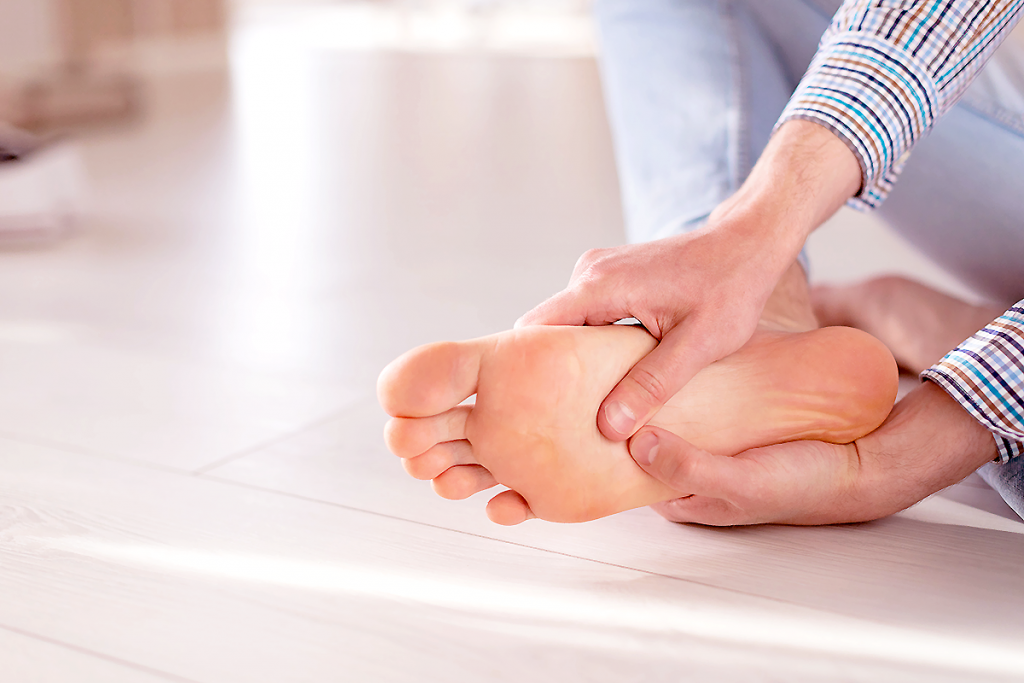How Do I Permanently Get Rid of Plantar Fasciitis?
Plantar fasciitis is a degenerative condition. In fact, sometimes people find it difficult to get rid of plantar fasciitis.
The plantar fascia is connective tissue along the bottom of your foot. When inflamed, it can cause chronic pain, which is common among:
- Runners
- People on their feet a lot
- Flat feet
- High arches
- Being overweight
At-Home Treatment Methods to Help Get Rid of Plantar Fasciitis Pain
Healing can take between 6 and 12 months to get rid of plantar fasciitis. And, there are at-home treatments to help relieve pain, such as:
Pain relievers. non-steroidal anti-inflammatory medications can help alleviate pain.
Stretching and exercise. Stretch out your calves, Achilles tendon, and the sole of your foot. Stretches help make your lower leg and ankle stronger. Therefore, increasing stability to ease the pain.
Athletic tape. To prevent your foot from moving in ways that make things worse.
Shoe inserts. For extra cushion and support. They can be custom made or purchased over the counter. Be sure to choose one that is firm. Additionally, one that has good arch support. Stay away from magnetic inserts. These are not proven to work with plantar fasciitis.
Heel cups. As you walk, the heel pounds the ground. Therefore, increasing the tension on the plantar fascia. And heel cups can help with this. They raise the heel to give extra padding.
Night splints. Most people sleep with their feet pointed downwards. Therefore, shortening the plantar fascia. Night splints keep your feet at a 90-degree angle. Allowing for a good stretch as you sleep. You only need to wear these until you are feeling better.
Walking boot. A cast or boot is used when other options have failed. These help control movement and force your foot to rest. Then, inflammation and pain are reduced. But, they may return when you stop using the device. You may also need other treatments like insoles.
RICE Method
Your doctor will likely recommend the RICE method. It is often used to treat plantar fasciitis pain. This method is as follows:
REST. Keeping weight off feet to reduce inflammation.
ICE. Use an ice pack, frozen vegetables, or a towel with ice. Place it on your heel 3 or 4 times a day. Do not use it for longer than 20 minutes at a time. You can also soak your feet in ice water. But keep your toes out of the water.
COMPRESSION. With this method, the goal is to keep your tissue bands underneath your feet from becoming irritated and help to reduce inflammation. Reducing inflammation helps the tissue bands heal faster.
ELEVATE. When sitting down, you will want to elevate your affected foot above your chest level. This method not only keeps your feet off the ground to keep your tissue bands from being irritated, but it also reduces blood flow which in turn helps with the healing process of the irritated tissue bands.
Can You Prevent Plantar Fasciitis?
Treatments can help your foot feel better. Once it does, lifestyle changes can prevent a recurrence, such as:
Losing weight. Being overweight increases foot pressure. Therefore, losing weight can prevent this.
Choose shoes with good support. Stay away from high heels, and replace athletic shoes often.
Do not go barefoot on hard surfaces. Even the first steps you take in the morning. Morning is when plantar fasciitis tends to be worse. It is a good idea to keep supportive footwear by your bed.
Also, see: Can Massages Help Plantar Fasciitis Pain?
If you are still experiencing foot pain without discomfort, call us at 888-409-8006.

